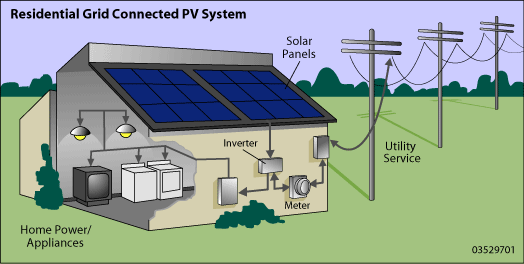Photovoltaic or PV for short, converts energy from the sun into electricity. PV uses a technology called solar cells that allow photons from the sun to stimulate electrons into a higher state of energy resulting in electricity. There are no moving parts so the system has a very long life cycle and requires very little maintenance.
PV technology is the most familiar in the solar energy industry, and right now has the highest percentage of state and federal incentives. So, it is a good time to evaluate the benefits of using PV to supply electricity for your home or business.
Is PV right for you? Think about these points to get a better understanding of PV
and if it is good fit in your energy strategy:
- Is my home heavily shaded by trees? – Unfortunately trees are not a solar energy collectors best friend. Even partial shade can reduce cell efficiency by as much as 30%.
- Are you aware of the cost factors? – PV systems generally run about $6,000 per kilowatt hour of power. An average home can use as many as 888 kilowatt hours per month, in this area a kilowatt system generates approximately 1250 kilowatts hours per year.
- Are you eligible for State and Federal Government tax credits? – There are tax and energy credits available that make PV more affordable in some states than in others.
- Did you know batteries can be included? – Most people want to use their critical appliances when the utility grid is not available, or continue to conserve when the sun is not shining. So we install battery banks to store energy for backup during outages or for use during extended periods of overcast skies.
- Do you know what Grid-tie means? – PV is tied into the power grid so you use less of the utilities’ power generation when the sun is providing electricity, and you send any excess power to the utilities’ grid.
- Do you understand the parts that are involved? – A PV system generally includes: panels, roof mounts, wiring, an inverter, a solar control panel, DC disconnect, fuses, and in some cases batteries.
- What is the return on investment for a Photovoltaic system? ROI mainly depends on how much annual sun you get, what government incentives are available, and how much your cost per kilowatt hour is.

